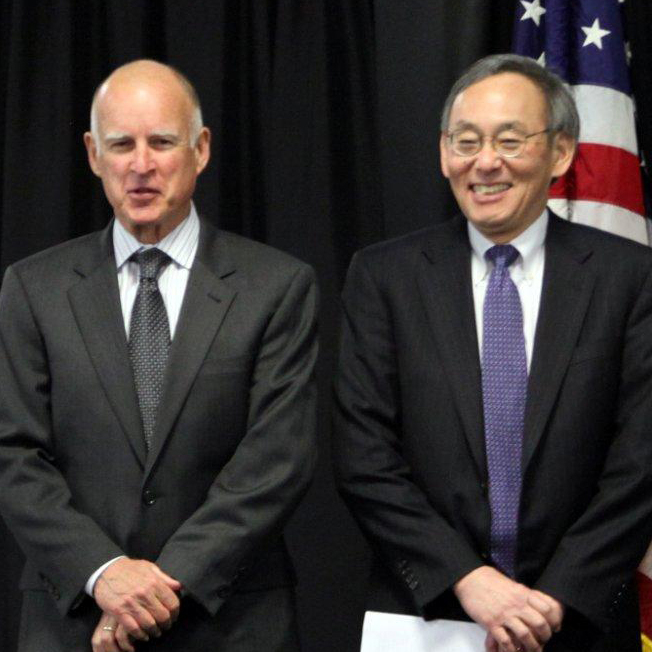California’s utilities now have their marching orders: to provide one third of the state’s electricity from renewable sources by 2020.
Now that the “33-by-20” target is a mandate backed by state law, supporters say it will lure more renewable energy investments to California. There’s evidence that it already is.
Calling it a “breakthrough,” Governor Brown signed the bill into law at the dedication of a new SunPower Corp. manufacturing plant in Milpitas, near San Jose. And he laid down a challenge:
“Last year six thousand megawatts of solar installations were produced by China and one thousand by the United States. Now, are we up for changing that? I think we are.”
Supporters say the 33% requirement provides a stable market for renewable energy, while critics fear it will mean higher electric bills. A statement from the California Republican Party said:
“Governor Brown is pressing ahead as if the pieces of papers he signs magically and automatically result in higher revenues or a better standard of living. The laws of economics, however, overrule Brown’s political laws.
Magical or not, the law has appeared to conjure up federal dollars for the state. Energy Secretary Steven Chu seized the occasion to announce $50 million in federal funding for renewables in California, and nearly $3 billion in loan guarantees for two big projects.
“Thanks to forward looking policies and forward-looking businesses, California will be the center of the action in helping the United States in building a bright energy future,” said Chu at the signing.
Part of that bright energy future includes SunPower’s brand new plant in Milpitas, which is expected to employ about 100 people.
President Obama has pledged to double the nation’s renewable power output by 2035.
4 thoughts on “Brown, Chu Tout New Renewables Law”
Comments are closed.


Hi Gretchen,
Thanks for the report. Unless I heard you wrong, at the end, you said President Obama has pledged to double renewable energy output by 2035. ??
If so, that has to be way off. We will double our renewable energy output several times over by 2035, with the possible exception of counting hydro in that mix, which will not be increasing significantly. The growth in solar, wind and geothermal will be in the thousands of percent, eh? Important to be clear and educational with one’s stats!
Thanks. Bit by bit, we need to push this rock up the hill and keep it from rolling back down. Our house has a 3 kW PV array which produces about 92 percent as many kWh as we consume. Our annual bill is zero and we hope to recover our initial investment after 13 years of operation, with another 25 years of profit after that, working out to a 6 percent annual return after 30 years.
But most of all we hope to have the household chunk of our GHG pollution reduced as close to zero as we can get it. Smart public policy, not made by powerful monied interests, is the only way we can survive and thrive. We’re not doing so well on that front these days, but a few good things still happen. In large part because there’s good money to be made competing with the dirty energy companies. In Germany, you get something like 58 cents per kWh that you pump into the grid from a PV installation! Here we get the current retail price only. Guess who has the most PV and is the most free of dirty, use-it-once-and-it’s-gone energy?
Have a nice day.
Hi Joseph,
Thanks for your comment. You’re correct that doubling renewable energy by 2035 sounds off. I should have said “clean” energy, which is how the Obama Administration is actually phrasing it. By “clean,” they are including not just hydro, but also nuclear and natural gas (for partial credit), as well as renewables. Thanks for pointing out this important distinction.
Gretchen
All nice and good but Sweden by 2020 will be entirely off fossil fuels leaving California in the wannabe dust. See http://www.global-warming-forecasts.com/2020-climate-change-global-warming-2020.php
That’s a breath-taking achievement. That’s really making a difference.
Seneca
This new law is a giant leap forward and sends an encouraging message to the venture capital community that the state remains committed to developing a vibrant renewable energy and clean technology sector.
Between 2005 and 2009, California clean tech firms received $9 billion in venture capital funds. By the second quarter of 2010 alone, the state received $980 million in funds – the most in the world!
For more commentary visit http://blog.amat.com/clean-tech-victory-for-california